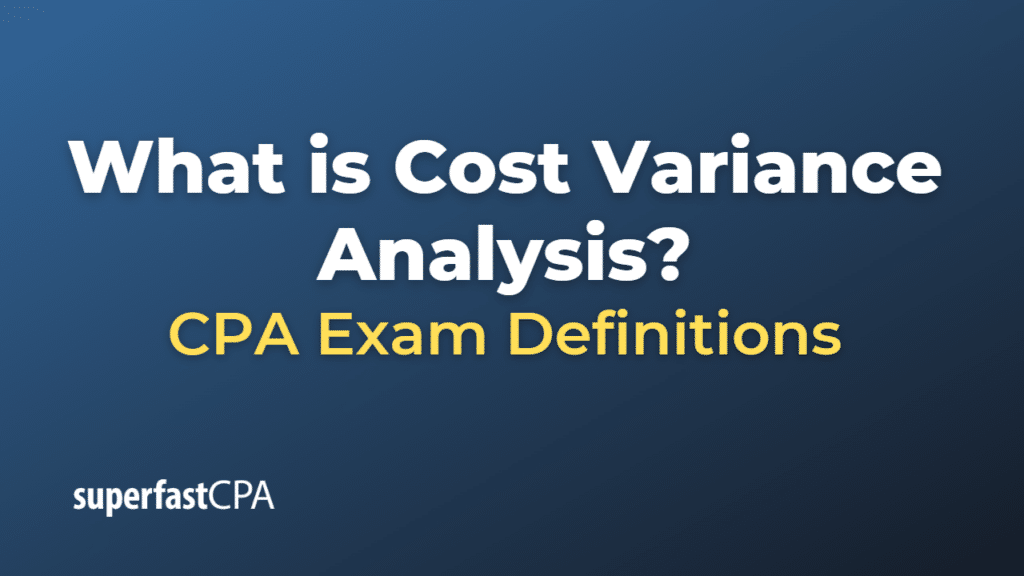Cost Variance Analysis
Cost variance analysis is a financial analysis technique that utilizes the difference between the actual cost and the standard or budgeted cost to determine the performance of a business, project, or process. It’s essentially the process of investigating the reasons and causes for the variance between these two figures.
Here’s a simple example of a cost variance analysis:
Let’s say a company budgeted $50,000 for a certain project, but the actual cost at the end of the project was $60,000. The cost variance in this case is $10,000. The company would then perform a cost variance analysis to find out why there was a $10,000 difference between the actual and budgeted costs.
This analysis could reveal that the overage was due to factors such as higher-than-expected material costs, unanticipated labor overtime, or inefficiencies in the production process. The company can then use this information to improve budgeting and cost management in future projects.
It’s important to note that cost variance can be both favorable (actual cost is less than the budgeted cost) and unfavorable (actual cost is more than the budgeted cost). Both scenarios require analysis to understand the underlying reasons and to make necessary adjustments.
Cost variance analysis is crucial for business management as it helps identify where performance is deviating from expectations, allowing for corrective actions to be taken. It’s commonly used in fields like project management, manufacturing, and finance.
Example of Cost Variance Analysis
Let’s consider a hypothetical manufacturing company to illustrate cost variance analysis.
Suppose a company expected to produce 1,000 units of a product, with a budgeted cost of $20 per unit for materials, making a total standard cost of $20,000 for materials. However, at the end of the production run, the company found that it had actually spent $22,000 on materials.
The cost variance for materials is therefore $22,000 (actual cost) – $20,000 (standard cost) = $2,000.
The company would then carry out a cost variance analysis to investigate why the actual cost was $2,000 higher than the standard cost.
Upon investigation, the company might discover that the price of a key material had increased unexpectedly. Alternatively, they might find that there was a lot of waste or inefficiency in the production process, leading to more materials being used than planned.
This analysis would help the company to understand the cause of the cost overrun and could lead to a number of possible actions, such as negotiating better prices with suppliers, improving production processes to reduce waste, or revising the standard costs if they no longer seem realistic.
This example illustrates how cost variance analysis can provide valuable insights into business operations, allowing companies to improve their cost management and financial performance.













